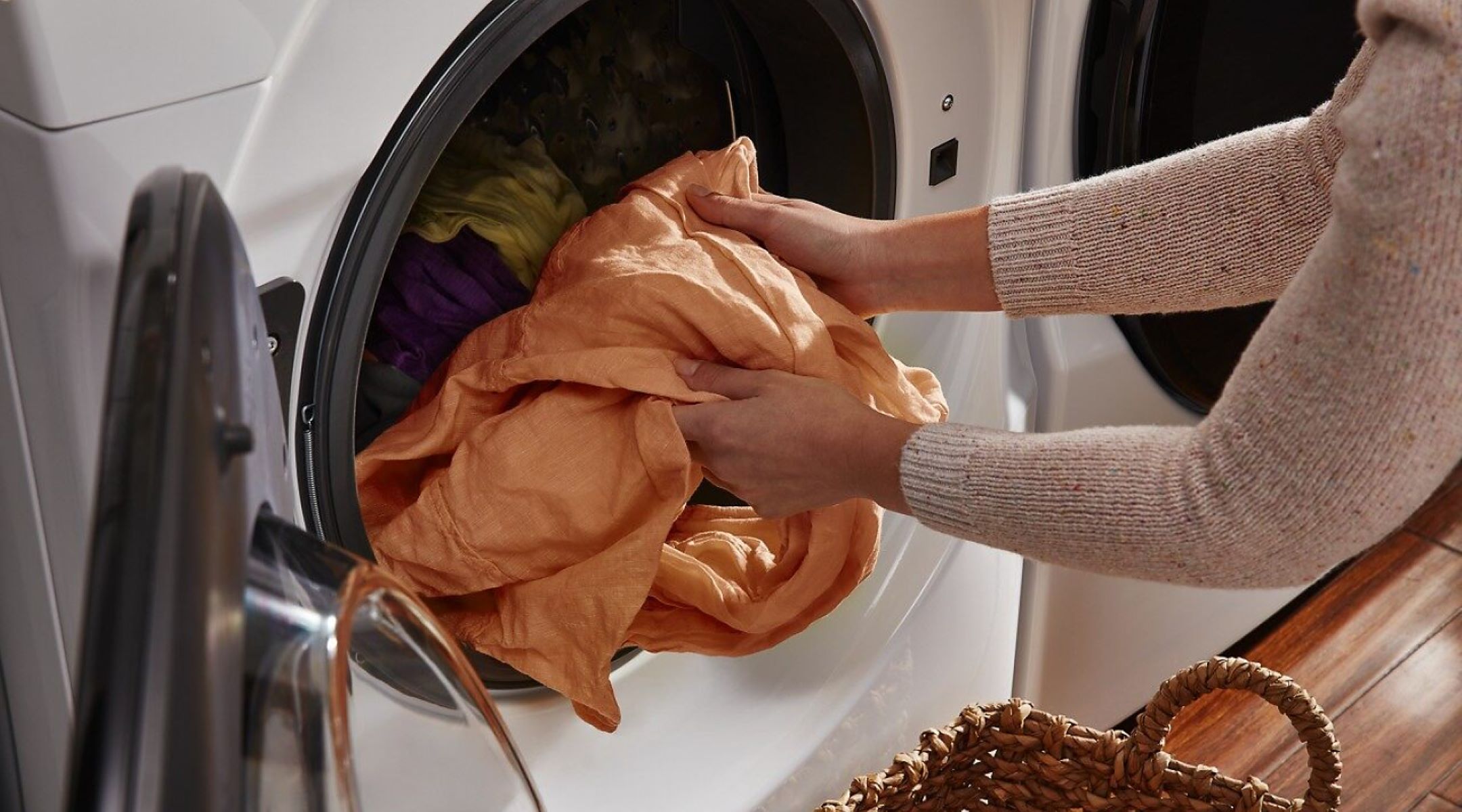

Articles
How Can I Wash A Weighted Blanket
Modified: October 18, 2024
Looking for articles on how to wash a weighted blanket? Discover expert tips and step-by-step guides to properly clean and maintain your cozy weighted blanket.
(Many of the links in this article redirect to a specific reviewed product. Your purchase of these products through affiliate links helps to generate commission for Storables.com, at no extra cost. Learn more)
Introduction
A weighted blanket is a type of blanket that is filled with small weighted materials, such as plastic pellets or glass beads. It is designed to provide a deep touch pressure sensation, which can help promote relaxation and reduce anxiety and stress. The weight of the blanket applies gentle pressure to the body, mimicking the feeling of being hugged or swaddled, and can provide a sense of comfort and security.
Weighted blankets have gained popularity in recent years for their potential therapeutic benefits. They are often used as a natural remedy to improve sleep quality and manage various conditions, including insomnia, anxiety, and sensory processing disorders. Additionally, many people find them helpful for general relaxation and promoting a sense of calm.
If you own a weighted blanket or are considering purchasing one, it is important to know how to properly care for it. Regular cleaning and maintenance are essential to keep the blanket clean, fresh, and in good condition. In this article, we will discuss how to wash a weighted blanket effectively to preserve its quality and prolong its lifespan.
Key Takeaways:
- Properly caring for a weighted blanket is crucial to maintain its therapeutic benefits. Follow manufacturer’s instructions for washing and drying, and store it in a cool, dry place when not in use.
- When washing a weighted blanket, use mild detergent, ensure proper balance in the washing machine, and air dry if possible. Regularly inspect for damages and store it neatly to prolong its lifespan.
Read more: How To Fix A Weighted Blanket
Understanding Weighted Blankets
A weighted blanket, as mentioned earlier, is a blanket that is specifically designed to be heavier than regular blankets. It is typically filled with materials such as plastic pellets or glass beads, evenly distributed throughout the blanket. The weight of the blanket can vary, but it is usually around 10% of a person’s body weight.
The concept behind weighted blankets is that the added weight provides deep touch pressure stimulation to the body. This gentle pressure has a calming effect on the nervous system, releasing neurotransmitters such as serotonin and dopamine, which can help improve mood and reduce anxiety and stress levels. It is often compared to the feeling of a soothing hug, providing comfort and promoting relaxation.
Weighted blankets have several potential benefits. Firstly, they are commonly used to improve sleep quality. The deep pressure stimulation from the blanket can help regulate the body’s natural sleep hormones, promoting a deeper and more restful sleep. This can be particularly beneficial for individuals who struggle with insomnia or have difficulty falling asleep or staying asleep throughout the night.
Furthermore, weighted blankets have been found to be effective in managing anxiety. The gentle pressure from the blanket can help reduce feelings of restlessness and unease, providing a sense of security and calm. This is why they are often recommended for individuals with anxiety disorders, sensory processing disorders, or those who experience anxiety-related symptoms, such as racing thoughts or a racing heart.
In addition to sleep and anxiety, weighted blankets can also be beneficial for individuals with certain conditions, such as ADHD or autism spectrum disorders. The deep touch pressure sensation can help improve focus and attention, promote better sensory integration, and provide a grounding effect.
It’s important to note that while weighted blankets can offer therapeutic benefits, they may not be suitable or recommended for everyone. It’s always best to consult with a healthcare professional or therapist to determine if a weighted blanket is appropriate for your specific needs.
Choosing the Right Weighted Blanket
When it comes to choosing a weighted blanket, there are a few factors to consider to ensure that you select the right one for your needs. Two important aspects to focus on are determining the appropriate weight and selecting the right fabric and filling material.
Determining the appropriate weight: The weight of a weighted blanket is crucial to its effectiveness and safety. As a general guideline, it is recommended to choose a blanket that is around 10% of your body weight. For example, if you weigh 150 pounds, a 15-pound weighted blanket would be suitable. However, this can vary depending on personal preference and individual needs. Some people may find a slightly heavier or lighter blanket more comfortable. If you are unsure, it’s best to start with a lighter weight and gradually increase it until you find the right level of pressure.
Selecting the right fabric and filling material: The fabric and filling material of a weighted blanket can greatly impact its feel and durability. It’s important to choose a fabric that is soft, breathable, and hypoallergenic. Cotton and bamboo are popular choices as they are gentle against the skin and promote airflow to prevent overheating. Avoid synthetic fabrics, as they may trap heat and cause discomfort.
When it comes to the filling material, glass beads and plastic pellets are the most commonly used options. Both materials provide an evenly distributed weight and a comfortable feeling. Glass beads are smaller and tend to create a smoother texture, while plastic pellets are slightly larger and may give a bit more texture and noise. Consider your personal preferences and any sensory sensitivities you may have when selecting the filling material.
Additionally, some weighted blankets come with a removable cover or duvet. These covers can be easily removed and washed, making maintenance and cleaning more convenient. They also add an extra layer of protection to the weighted blanket itself.
By taking the time to determine the appropriate weight and selecting the right fabric and filling material, you can ensure that your weighted blanket is comfortable, durable, and suited to your individual needs.
Preparing to Wash a Weighted Blanket
Before you begin washing your weighted blanket, it’s important to take a few steps to ensure that the cleaning process goes smoothly. This includes checking the care instructions provided by the manufacturer and removing any removable cover or duvet that may be attached to the blanket.
Checking the care instructions: The first step in preparing to wash a weighted blanket is to carefully read the care instructions provided by the manufacturer. Different brands and materials may have specific cleaning requirements, so it’s essential to follow the recommended guidelines to avoid damaging the blanket. The care instructions will typically indicate whether the blanket can be safely machine washed, hand washed, or if it should be dry cleaned.
Removing any removable cover or duvet: Many weighted blankets come with a removable cover or duvet. These covers are usually attached to the blanket using buttons, zippers, or ties, making it easy to remove them for cleaning. Before washing the weighted blanket itself, it’s important to detach the cover or duvet and set it aside. This will allow you to wash the cover separately and keep the weighted portion of the blanket clean.
Once you have checked the care instructions and removed any removable cover or duvet, you are ready to proceed with washing your weighted blanket. Following these initial preparation steps will help ensure that you clean the blanket correctly and maintain its quality throughout the laundering process.
Washing Methods for Weighted Blankets
When it comes to washing a weighted blanket, there are two primary methods you can choose from: hand washing and machine washing. The method you select will depend on the care instructions provided by the manufacturer and your personal preference.
Hand washing: Hand washing is often the preferred method for cleaning weighted blankets, particularly if the care instructions recommend it or if the blanket is made with delicate materials. To hand wash your weighted blanket, follow these steps:
- Fill a bathtub or large basin with lukewarm water. Add a mild laundry detergent and mix until it is well-dissolved.
- Immerse the weighted blanket in the water and gently agitate it with your hands. Pay close attention to any soiled areas and gently rub them to remove stains.
- Allow the blanket to soak for about 15 minutes to allow the detergent to penetrate the fabric and remove any dirt or odors.
- Drain the soapy water and refill the tub or basin with clean lukewarm water. Rinse the blanket thoroughly to remove any traces of detergent.
- Squeeze out excess water gently, but avoid twisting or wringing the blanket, as this can damage the internal weight distribution.
- To remove any remaining moisture, you can roll the blanket in a dry towel and press down gently to absorb excess water.
- Finally, hang the weighted blanket on a clothesline or lay it flat on a clean, dry surface to air dry completely before storing or using it again.
Machine washing: If the care instructions allow for it, machine washing can be a convenient and effective way to clean a weighted blanket. However, it’s important to take some precautions to ensure that the blanket is not damaged during the process. To machine wash your weighted blanket, follow these guidelines:
- Check the weight capacity of your washing machine. Ensure that it can safely accommodate the weight of the blanket, including the added weight of water during the washing cycle.
- Place the weighted blanket in the washing machine, making sure it is evenly distributed to maintain the balance of the machine.
- Add a mild laundry detergent to the machine, following the recommended dosage by the manufacturer.
- Select a gentle cycle, such as a delicate or hand wash cycle, to minimize agitation and reduce the risk of damage to the blanket.
- Use cold water for both the wash and rinse cycles. Hot water can potentially damage the blanket or affect the integrity of the weighted material.
- Once the washing cycle is complete, remove the blanket from the machine and gently squeeze out any excess water.
- Follow the same drying steps as for hand washing, either by rolling the blanket with a dry towel or laying it flat to air dry.
Following these washing methods will help ensure that your weighted blanket is effectively cleaned while maintaining its quality and integrity. Always remember to refer to the care instructions provided by the manufacturer and use your best judgment based on the specific material and construction of your weighted blanket.
When washing a weighted blanket, use a gentle cycle with cold water and mild detergent. Avoid using bleach or fabric softener. Air dry or use a large capacity dryer on low heat to prevent damage to the blanket.
Read more: How To Dry A Weighted Blanket
Tips for Washing a Weighted Blanket
When washing a weighted blanket, there are a few tips that can help ensure a successful cleaning process and maintain the quality of the blanket:
Using mild detergent: It is important to use a mild laundry detergent when washing a weighted blanket. Harsh detergents, bleach, or fabric softeners can damage the fabric or affect the weighted materials inside. Opt for a detergent that is gentle and free from dyes, fragrances, and chemicals. This will help preserve the integrity of the fabric and ensure that the blanket remains soft and comfortable.
Ensuring proper balance in the washing machine: If you choose to wash your weighted blanket in a washing machine, it is essential to ensure proper balance to avoid strain on the machine and minimize damage to the blanket. Here are some tips to achieve this:
- Use a large-capacity washing machine that can accommodate the weight of the blanket without overloading it.
- If your machine has an agitator, ensure that the blanket is evenly distributed around it. This will help maintain balance and prevent the blanket from becoming lopsided during the wash.
- If the blanket is too heavy for your machine or if you are concerned about potential damage, consider taking it to a laundromat with commercial-sized machines that can handle the weight more effectively.
- If necessary, adding a few towels or garments of similar weight can help balance the load and distribute the weight more evenly throughout the machine.
By using mild detergent and ensuring proper balance in the washing machine, you can help protect your weighted blanket from potential damage and maintain its quality throughout the cleaning process.
Remember, it is always essential to follow the manufacturer’s care instructions specific to your weighted blanket. These tips serve as general guidelines, but there may be specific considerations or requirements for your particular blanket. Taking proper care of your weighted blanket will prolong its lifespan and ensure that you continue to enjoy its therapeutic benefits for years to come.
Drying a Weighted Blanket
After washing a weighted blanket, it’s important to properly dry it to maintain its quality and avoid any potential damage. There are two primary methods for drying a weighted blanket: air drying and machine drying. The best method for your blanket will depend on its specific care instructions and your personal preference.
Air drying: Air drying is often the recommended method for drying a weighted blanket, as it is gentle and minimizes the risk of damage. Here’s how to air dry your blanket:
- Take the clean, wet blanket out of the washing machine and gently squeeze out any excess water. Avoid wringing or twisting the blanket, as this can cause the weighted materials inside to become unevenly distributed.
- Find a suitable location to hang the weighted blanket, such as a clothesline or drying rack. Ensure that the area is well-ventilated and away from direct sunlight to prevent fading or discoloration.
- Hang the blanket evenly and make sure it is not bunched up or folded, as this can lead to uneven drying and potential damage.
- Allow the weighted blanket to air dry completely. This may take several hours or even overnight, depending on the thickness and weight of the blanket.
- Once the blanket is completely dry, give it a gentle shake to fluff up the weighted materials and restore its softness and shape.
Machine drying with caution: Some weighted blankets may be suitable for machine drying, but it’s essential to proceed with caution to prevent any potential damage. If the care instructions allow for machine drying, follow these guidelines:
- Check the care instructions to see if the blanket can be safely machine dried. Some blankets may require air drying only.
- If machine drying is permitted, place the clean blanket in the dryer and add a few clean, dry towels or dryer balls to help distribute the heat and promote even drying.
- Select a low heat or delicate setting on your dryer to minimize the risk of overheating or shrinkage.
- Set the timer for a shorter drying cycle to periodically check the blanket’s progress. This will help prevent over-drying or exposure to excessive heat.
- Once the weighted blanket is dry, remove it from the dryer promptly to prevent any wrinkles from setting in. Give it a gentle shake to fluff up the weighted materials.
Note that machine drying can be more risky and may affect the integrity of the weighted materials or the overall quality of the blanket. Air drying is generally the safer and recommended method for drying a weighted blanket.
By taking care to properly dry your weighted blanket, you can maintain its softness, shape, and overall effectiveness, ensuring that it continues to provide comfort and therapeutic benefits for a long time.
Maintaining the Quality of a Weighted Blanket
To ensure your weighted blanket remains in good condition and continues to provide optimal comfort and therapeutic benefits, it’s essential to follow proper maintenance practices. Here are two key aspects of maintaining the quality of your weighted blanket:
Storing properly when not in use: When your weighted blanket is not in use, it’s important to store it properly to protect it from dust, dirt, and potential damage. Here are some guidelines for storing your weighted blanket:
- Before storing, make sure the blanket is clean and completely dry. This helps prevent the growth of mold or mildew.
- Fold the blanket neatly to minimize creases and wrinkles. Avoid rolling or bunching up, as this can affect the distribution of the weighted materials and create uneven pressure.
- Store the weighted blanket in a cool, dry place away from direct sunlight to prevent fading or discoloration of the fabric.
- Consider using a storage bag or a breathable fabric cover to protect the blanket from dust or insects.
Taking care of any repairs or damages: Over time, your weighted blanket may experience wear and tear or require minor repairs. It’s important to address any damages promptly to prevent them from worsening. Here are a few tips for taking care of repairs:
- Regularly inspect your weighted blanket for any loose threads, seams, or tears. If you notice any, mend them as soon as possible to prevent further damage.
- For minor repairs, use a needle and thread to stitch up any small holes or loose threads. Make sure to use a thread that matches the color of the blanket to maintain its appearance.
- If there are major damages or issues that are beyond your repair capabilities, consider taking the blanket to a professional seamstress or tailor who specializes in repairs.
- If your weighted blanket has a removable cover or duvet, check the care instructions for proper cleaning and maintenance. Follow the guidelines to keep the cover in good condition, and replace it if necessary.
By storing your weighted blanket properly and taking care of any repairs or damages, you can prolong its lifespan and maintain its quality over time. Regular maintenance and attention to detail will ensure that your weighted blanket continues to provide comfort, relaxation, and therapeutic benefits for years to come.
Conclusion
Weighted blankets have become increasingly popular due to their potential therapeutic benefits, including improved sleep quality, reduced anxiety, and increased relaxation. To ensure that your weighted blanket continues to provide these benefits, it’s important to properly care for and maintain its quality.
When washing a weighted blanket, follow the recommended care instructions provided by the manufacturer. This may include hand washing or machine washing with a mild detergent. Take care to ensure proper balance in the washing machine to avoid strain on the machine and potential damage to the blanket.
After washing, choose the appropriate drying method for your weighted blanket. Air drying is generally recommended to maintain its shape and prevent shrinkage or damage. If machine drying is allowed, use low heat and remove the blanket promptly to prevent over-drying.
To keep your weighted blanket in good condition, store it properly when not in use. Make sure it is clean and dry before folding and storing it in a cool, dry place away from direct sunlight. Consider using a storage bag or fabric cover to protect it from dust and insects.
Regularly inspect your weighted blanket for any repairs or damages. Mend any minor issues promptly with needle and thread, and seek professional help for major damages that require specialized repair skills.
By following these maintenance practices, you can ensure the longevity and effectiveness of your weighted blanket. Enjoy the continued comfort, relaxation, and therapeutic benefits that it provides, allowing you to unwind, de-stress, and experience restful nights of sleep.
Frequently Asked Questions about How Can I Wash A Weighted Blanket
Was this page helpful?
At Storables.com, we guarantee accurate and reliable information. Our content, validated by Expert Board Contributors, is crafted following stringent Editorial Policies. We're committed to providing you with well-researched, expert-backed insights for all your informational needs.

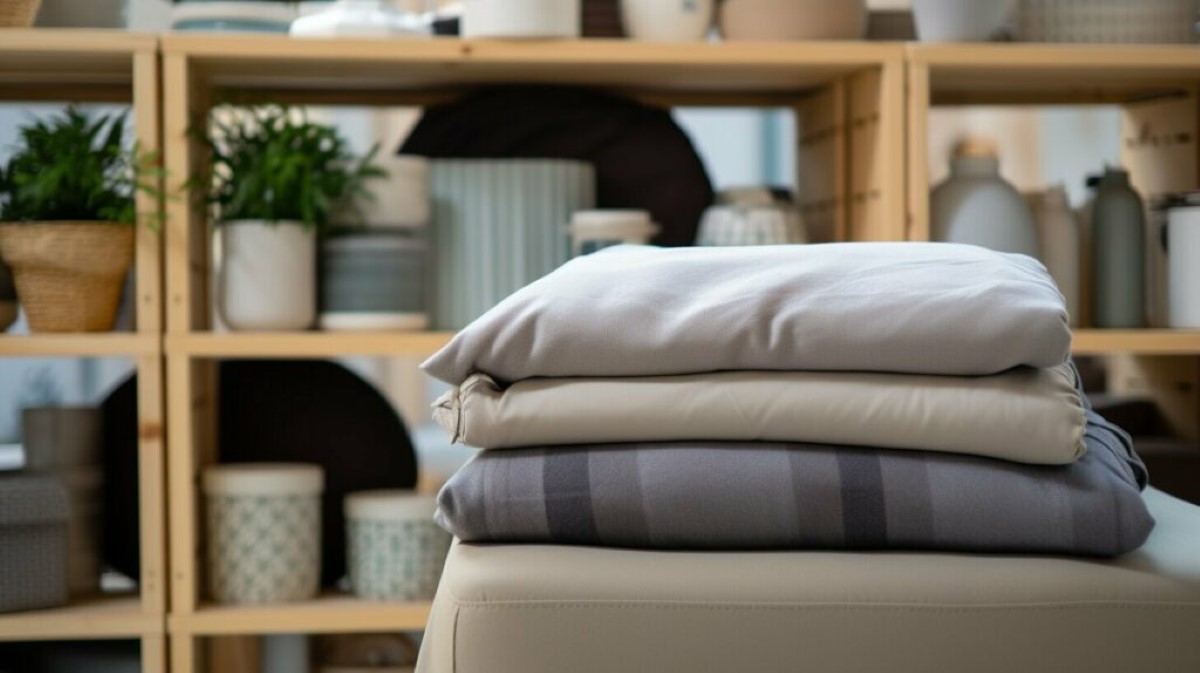

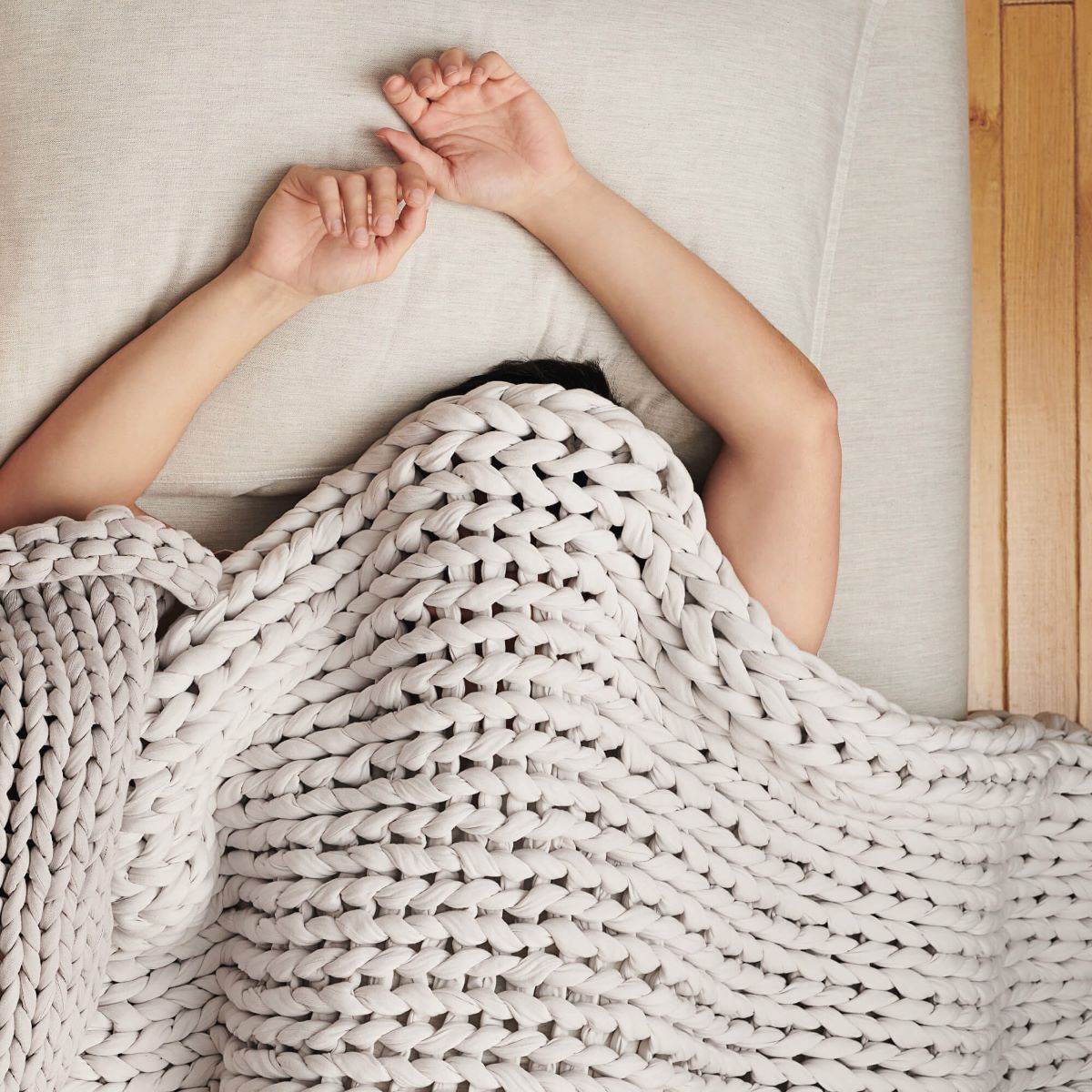



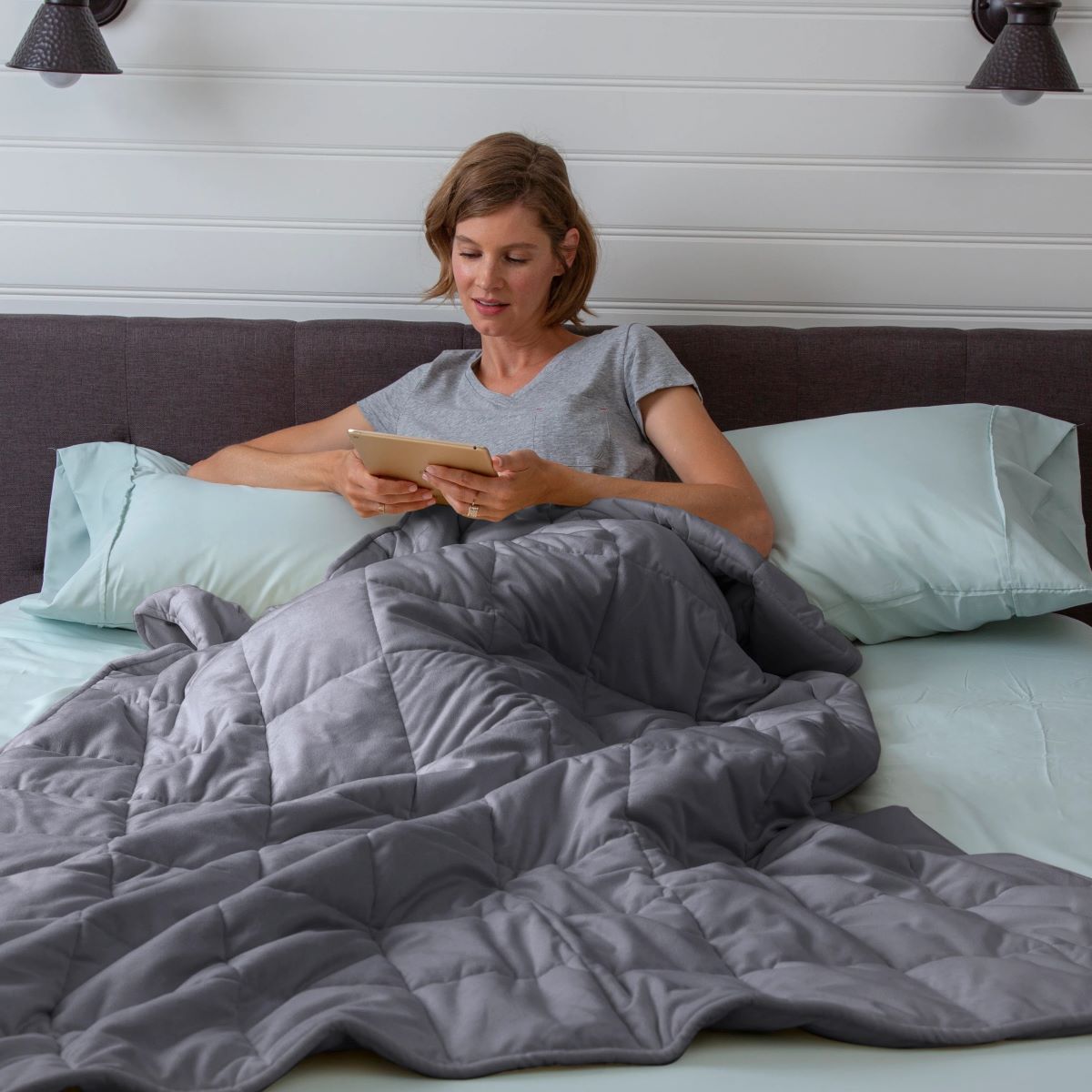

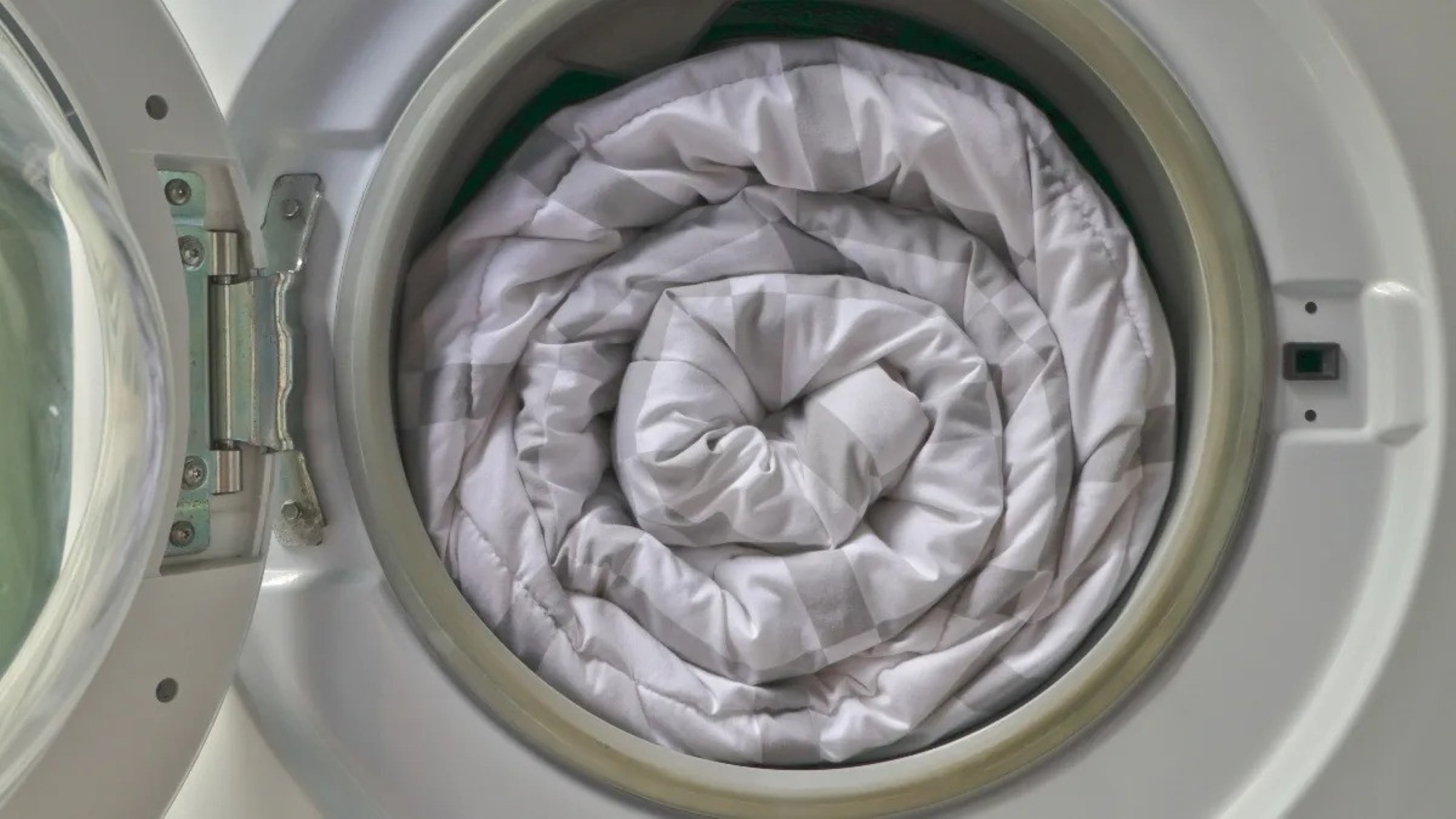
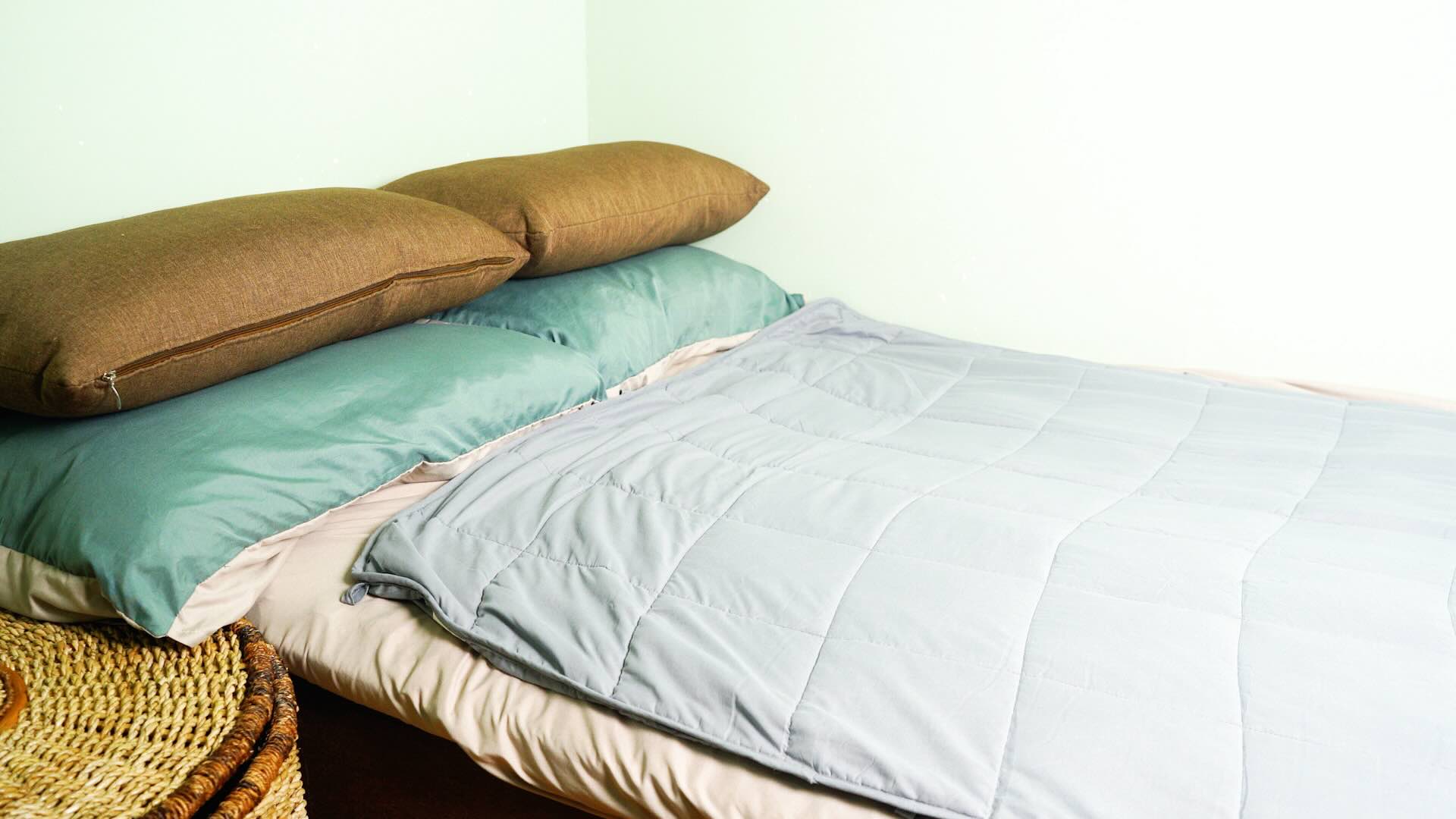

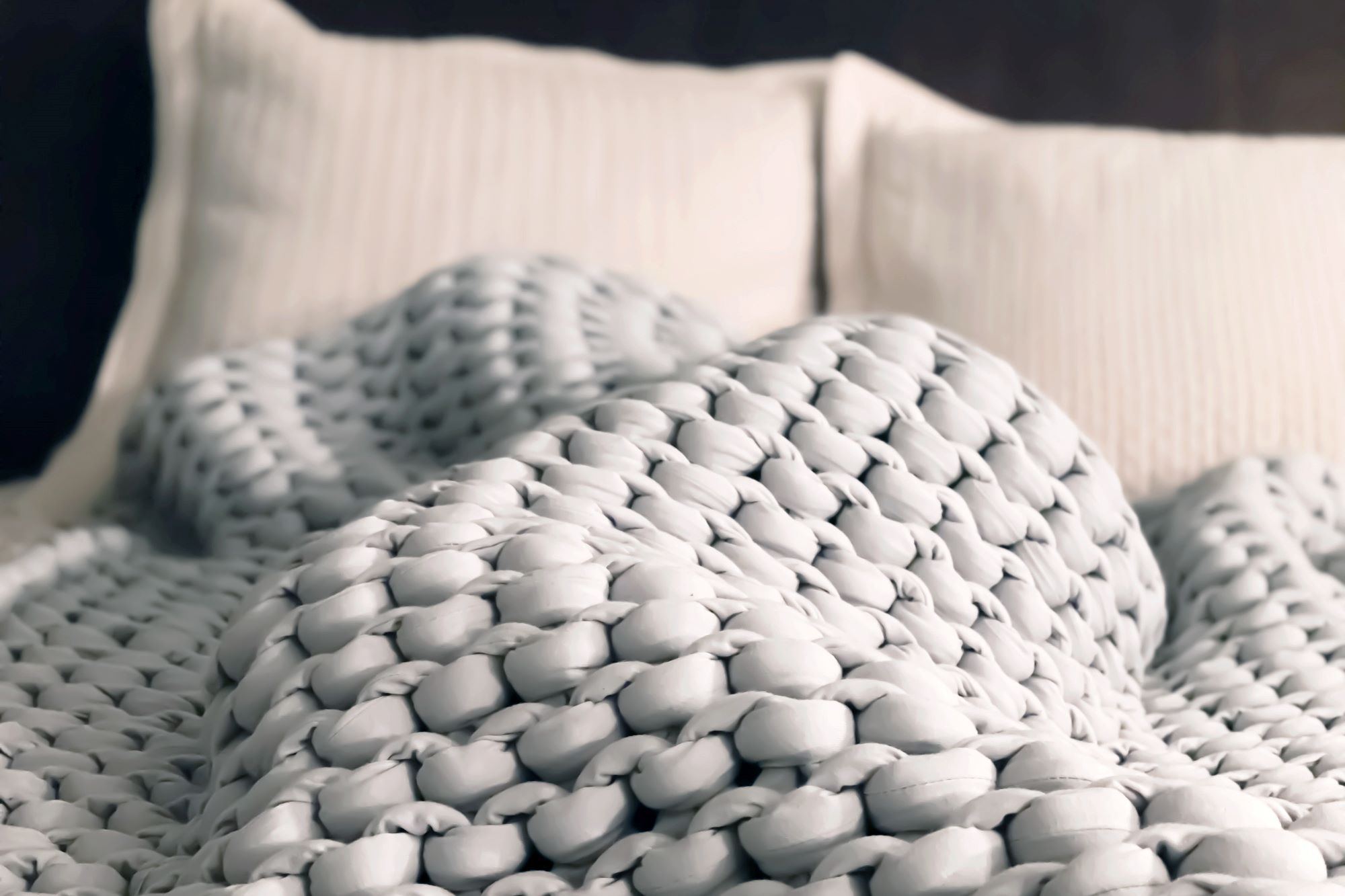
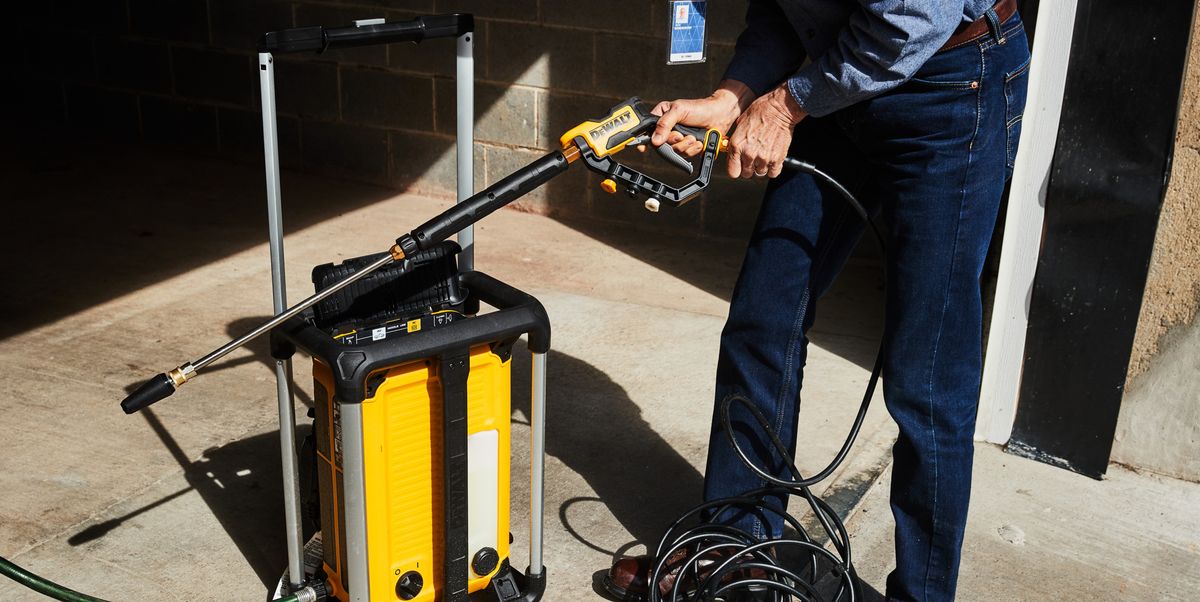

0 thoughts on “How Can I Wash A Weighted Blanket”